There is a labyrinth in the heart of Rome, indeed: in the heart of Italy, in the highest institutional seat of state. In fact, not everyone is aware of the presence of a labyrinth in the garden of the Quirinal Palace, right inside the seat of the Presidency of the Republic: one of the most beautiful gardens in the country, the result of centuries of modifications and remodeling of the park of the splendid palace built on the highest point of Monte Cavallo. Four hectares of greenery that begin at the Porta Giardini gate, which takes visitors directly to the Avenue of the Palms, the path that leads along all areas of the park, including the labyrinth.
Cardinal Ippolito d’Este was responsible for the opening of the garden, designed after 1550 by Girolamo da Carpi (Ferrara, 1501 - 1556) and Tommaso Ghinucci (Siena, active in the 16th century). The cardinal from Ferrara had rented in 1550 the villa that belonged to the Carafa nobles and was located on the Quirinal Hill: it was Ippolito d’Este himself who first gave a definite shape to the grounds around the villa, transforming them into a sumptuous garden with fountains, pathways, wooden pavilions, and ancient sculptures from his own collection that adorned the central nymphaeum. Throughout the sixteenth century the garden would not undergo any changes, not even with the successors of Cardinal Ippolito d’Este: things changed at the beginning of the seventeenth century, by which time the Carafa villa had been purchased by the Camera apostolica, and thus had become papal property. It was under Paul V that the garden of the Quirinal was enlarged toward the Quattro Fontane, with the acquisition of new land, and was transformed into a monumental park, to which was added, in 1741, the splendid Coffee House designed by Ferdinando Fuga (Florence, 1699 - Naples, 1782), a small building with a central loggia leading toward two small side rooms, one frescoed in the vault with the magnificent Consegna delle Chiavi by Pompeo Batoni (Lucca, 1708 - Rome, 1787), the other instead decorated with Christ Recommending His Flock to Peter by Agostino Masucci (Rome, 1691 - 1758) and with two very fine canvases by Giovanni Paolo Panini (Piacenza, 1691 - Rome, 1765), depicting the Piazza del Quirinale and Santa Maria Maggiore. It was following these interventions that, in the 19th century, came the labyrinth.
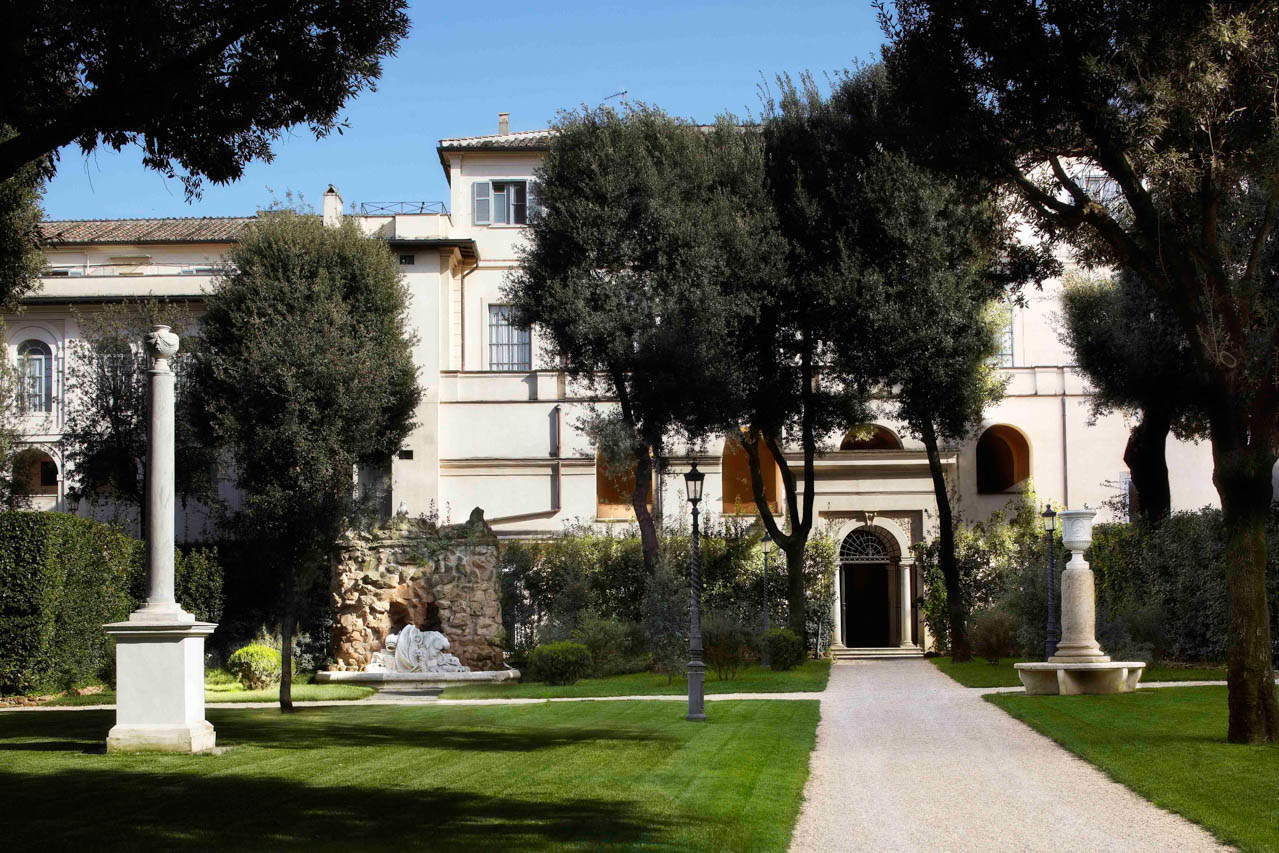 The gardens of the
The gardens of the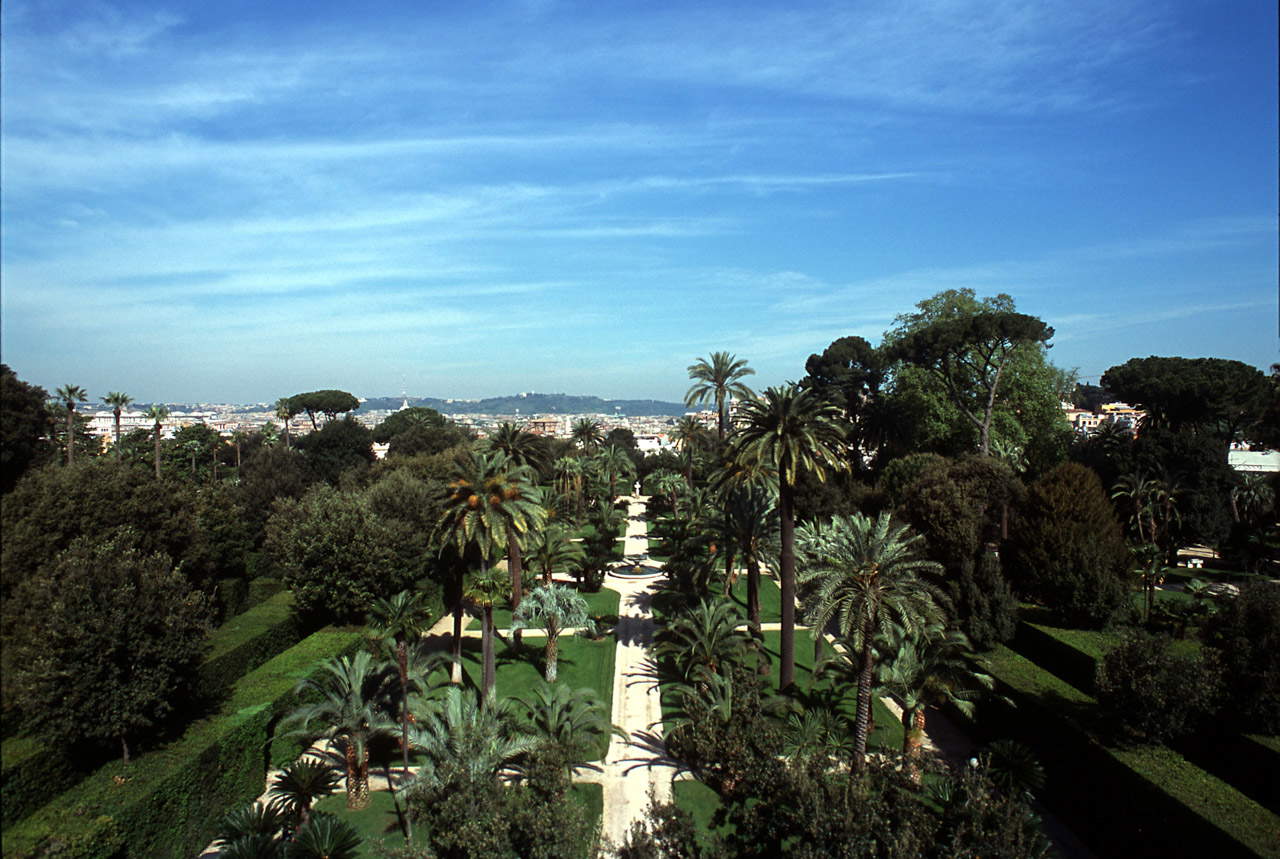 The
The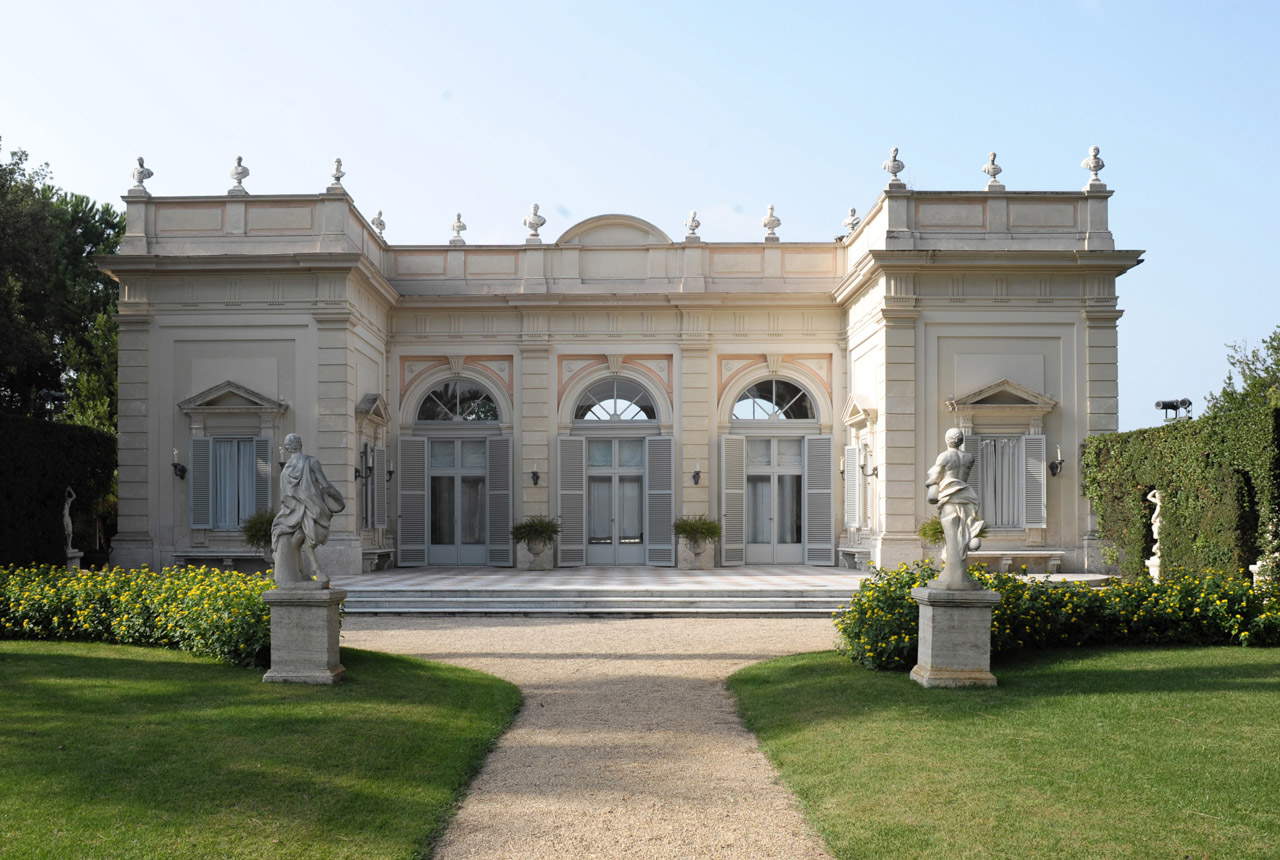
Under the pontificate of Gregory XVI (1831 - 1846), the garden was in fact extensively rearranged according to the taste of the time: Thus, the trees were replaced with essences capable of evoking the fashion of the English garden, a marble fountain designed by Filippo Martinucci was placed in the garden, and, in 1839, opened the labyrinth, the design of which, according to the Dizionario di erudizione storico-ecclesiastica written by the bibliographer Gaetano Moroni (who was also an assistant to Gregory XVI), is due to the architect Gaspare Salvi (Rome, 1786 - 1849). It is not a square or rectangular or circular labyrinth, as one usually thinks of when one imagines a labyrinth: its structure is in fact quite unusual, although it is made according to a regular geometric shape. In fact, it has an elliptical shape, and of course the course of the walls follows the same shape, with the obvious result that one finds oneself always walking along curved lines, and since the corridors are also very narrow, it is almost impossible to manage to take two steps in a straight line.
The labyrinth of the Quirinal Palace, arranged just below the windows of the eastern wing of the complex, still has its original walls made of boxwood (buxus sempervirens of the buxaceae), an evergreen shrub known for the hardiness, workability, strength and durability of its wood, and also famous because it is a a plant particularly suitable for making lush and orderly hedges, since this essence, if pruned with due regularity, adapts well to any shape you want to give it, and because its compact form guarantees aesthetically pleasing results, reasons why it has been so popular in Italian gardens for centuries. The path of the labyrinth can be observed well from the terrace above the 19th-century Casina Svizzera (also built at the behest of Gregory XVI): the terrace was placed exactly opposite the labyrinth, and was built specifically to see it from above. Partly because it was fun to see the guests walk the corridors of the labyrinth. And partly because its shape was meant to inspire the pontiff in solving the problems that came his way in the exercise of his power.
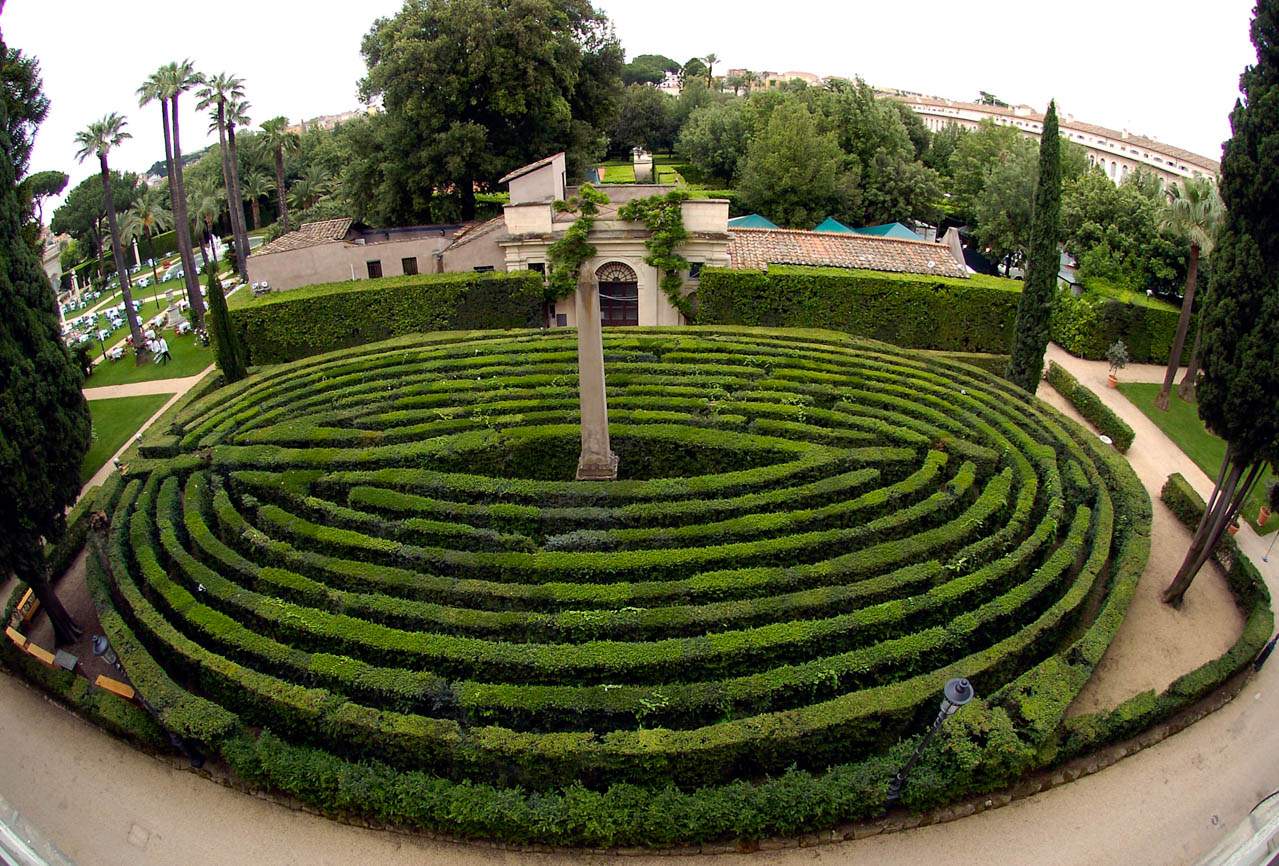 The labyrinth of the
The labyrinth of the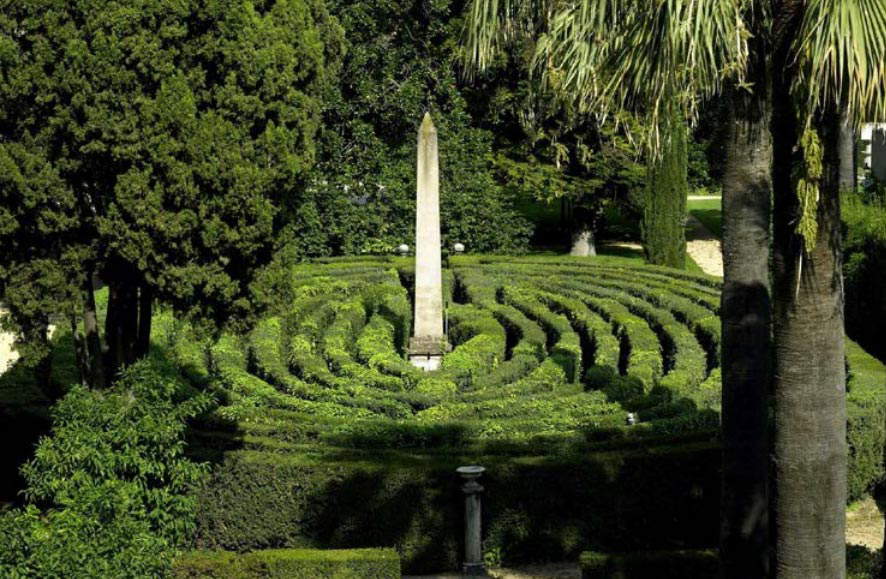
At the center of the labyrinth, a small obelisk was placed, which from the Egyptian, and therefore pagan, repertoire had by then for centuries risen to a Christian symbol: in particular, in this context it becomes a reminder of theelevation of the human beingto God, of the human being’s knowledge of divinity. The path of the labyrinth was thus studied by virtue of its symbolic function: when the visitor enters the labyrinth, he sees the obelisk exactly in front of him, and to reach it seems a feat of extreme ease, since the entrance corridor is straight and seems to end with the obelisk itself. But a short distance from the center, the visitor is diverted, and to reach the obelisk he will have to face a long, one-way, obligatory path. There is no possibility of getting lost in the labyrinth of the Quirinal: it is an allegory of the life of the good Christian who overcomes all the obstacles along his path to reach his goal, the knowledge of God.
The labyrinth then followed the history of the Quirinal Palace, which became the residence of the King of Italy from 1870 following the annexation of Rome and Latium to the Kingdom, and then, since 1946, the residence of the President of the Italian Republic. The maze today can be seen in the course of a visit to the palace and its gardens: reservations must be made in good time, since the Quirinale is not always open, and when it is, there are many visitors eager to discover it. Since it was opened in 1839, it has never been altered: you can therefore walk through it today seeing it as all those who, in the nineteenth century, were received by the popes in their sumptuous residence saw it.
 |
| A maze in the heart of the Republic. The labyrinth of the Quirinal |
Warning: the translation into English of the original Italian article was created using automatic tools. We undertake to review all articles, but we do not guarantee the total absence of inaccuracies in the translation due to the program. You can find the original by clicking on the ITA button. If you find any mistake,please contact us.